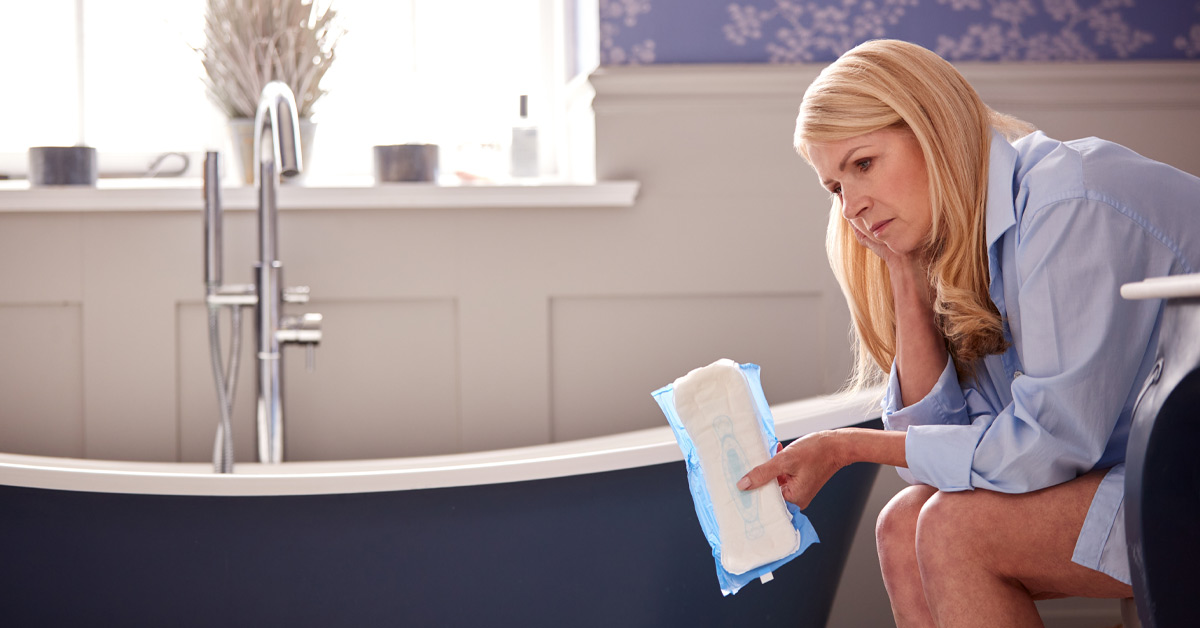Incontinence pads are absorbent liners you wear inside your underwear to catch urine leaks. They come in all shapes and absorbency levels, and many are designed to be discreet and comfortable. For occasional leaks or short-term use, pads can be incredibly helpful.
But, they’re not the only option, and in many cases, they aren’t the best choice either.
Pads can:
- Be expensive
- Cause skin irritation
- Make you feel self-conscious
And, most importantly, pads don’t treat the cause of urinary incontinence.
The Alternative to Incontinence Pads
If you are using incontinence pads, it may be time to explore alternatives that not only manage leaks but also help reduce or prevent them.
1. Train your bladder and pelvic floor
One of the most effective ways to reduce urine leaks is to strengthen the muscles that support your bladder. This is especially true if you experience leakage when laughing, coughing, or lifting something. These are muscles that make up your pelvic floor, and exercises known as Kegels can help tighten and train them. With time and consistency, many people notice a real difference.
For those dealing with an overactive bladder or a sudden need to go, bladder training can also help. Bladder training involves gradually stretching the time between bathroom visits. This allows you to regain control and reduce the urge to go.
2. Try medications
There are medications that can calm an overactive bladder or help it hold more urine. These include:
- Bladder relaxants that reduce spasms
- Drugs that help the bladder store more urine with fewer urges
Medications won’t work for everyone and can have side effects. However, they can be a helpful option, especially when combined with lifestyle changes or pelvic floor therapy.
3. Explore non-surgical devices or procedures
If exercises and medications aren’t enough, there are other options that don’t involve major surgery.
- Pessary devices, for women, are small, flexible inserts placed in the vagina. They support the bladder and reduce leaks from physical pressure.
- Botox injections into the bladder can reduce muscle overactivity and help with urgency and frequency.
- Urethral bulking agents are quick injections that make the urethra seal more tightly during stress, like when you sneeze or cough.
- Neuromodulation devices are small implants placed near the tailbone. They help normalize the messages between the brain and bladder.
4. Adopt a few basic lifestyle changes
Sometimes, minor adjustments in daily habits can add up to big changes in bladder symptoms. These changes can be especially helpful when made alongside therapy or treatment and include:
- Cutting back on caffeine and alcohol, which can irritate the bladder.
- Staying hydrated, but avoiding large amounts all at once or at night.
- Maintaining a healthy weight, which takes pressure off your bladder.
- Preventing constipation, as it can make leaks worse.
- Quitting smoking, which is linked to both chronic cough and bladder weakness.
5. Surgical options for long-term relief
For certain types of incontinence, especially stress incontinence, surgery may offer a permanent fix. It’s not the first step, but for people who haven’t found relief with other treatments, it can be life-changing. The most common intervention is a sling procedure, where a small strip of material is placed to support the urethra and prevent leakage.
See a Urologist for Incontinence Treatment
There are effective solutions for incontinence that can reduce or even stop bladder leaks. You don’t have to rely on daily incontinence pads. With the right treatment, many people can find relief from all types of urinary incontinence.
Don’t continue to rely on incontinence pads – schedule an appointment today!

